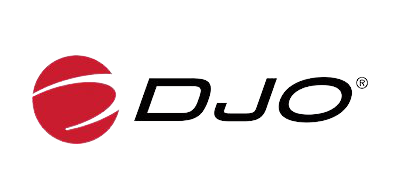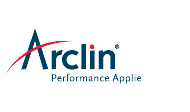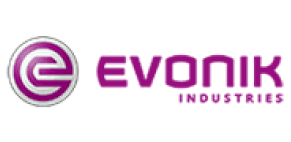Report Summary
Summary
Hyper-converged infrastructure (HCI) is a software-defined IT infrastructure that virtualizes all of the elements of conventional "hardware-defined" systems. HCI includes, at a minimum, virtualized computing (a hypervisor), a virtualised SAN (software-defined storage) and virtualized networking (software-defined networking). HCI typically runs on commercial off-the-shelf (COTS) servers.
The APAC region is expected to play a key role in the hyper-converged infrastructure market and grow at the highest rate during the forecast period. Rising awareness of data management through common interface at reduced total cost of ownership, growing focus toward VDI, server virtualization, and popularity of using infrastructure-as-a-service (IaaS) solutions are the prime factors driving the HCI systems market in this part of the world.
In 2020, the global Hyper-Converged Infrastructure market size was xx million US$ and it is expected to reach xx million US$ by the end of 2027, with a CAGR of xx% between 2021 and 2027.
This report studies the Hyper-Converged Infrastructure market size by players, regions, product types and end industries, history data 2017-2020 and forecast data 2020-2027; This report also studies the global market competition landscape, market drivers and trends, opportunities and challenges, risks and entry barriers, sales channels, distributors and Porter's Five Forces Analysis.
This report focuses on the global top players, covered
Atlantis Computing
Cisco
EMC
Fujitsu
Gridstore
HP
SimpliVity
Maxta
Nimboxx
Nutanix
Pivot3
Scale Computing
NetApp
DataCore Software
Vmware
Market segment by Regions/Countries, this report covers
North America
Europe
China
Rest of Asia Pacific
Central & South America
Middle East & Africa
Market segment by Type, the product can be split into
VMware
KVM
Hyper-V
Market segment by Application, the market can be split into
Financial Institutions
Healthcare
Government
Education
Cloud Service Providers
The study objectives of this report are:
To study and forecast the market size of Hyper-Converged Infrastructure in global market.
To analyze the global key players, SWOT analysis, value and global market share for top players.
To define, describe and forecast the market by type, end use and region.
To analyze and compare the market status and forecast among global major regions.
To analyze the global key regions market potential and advantage, opportunity and challenge, restraints and risks.
To identify significant trends and factors driving or inhibiting the market growth.
To analyze the opportunities in the market for stakeholders by identifying the high growth segments.
To strategically analyze each submarket with respect to individual growth trend and their contribution to the market
To analyze competitive developments such as expansions, agreements, new product launches, and acquisitions in the market.
To strategically profile the key players and comprehensively analyze their growth strategies.
In this study, the years considered to estimate the market size of Hyper-Converged Infrastructure are as follows:
History Year: 2017-2020
Base Year: 2020
Estimated Year: 2020
Forecast Year 2021 to 2027
For the data information by region, company, type and application, 2020 is considered as the base year. Whenever data information was unavailable for the base year, the prior year has been considered.
Key Stakeholders
Raw material suppliers
Distributors/traders/wholesalers/suppliers
Regulatory bodies, including government agencies and NGO
Commercial research & development (R&D) institutions
Importers and exporters
Government organizations, research organizations, and consulting firms
Trade associations and industry bodies
End-use industries
Available Customizations
With the given market data, EternityInsights offers customizations according to the company's specific needs. The following customization options are available for the report:
Further breakdown of Hyper-Converged Infrastructure market on basis of the key contributing countries.
Detailed analysis and profiling of additional market players.
Table Of Contents
Table of Contents
Hyper-Converged Infrastructure Market Report by Company, Regions, Types and Applications, Global Status and Forecast to 2025
1 Industry Overview of Hyper-Converged Infrastructure
1.1 Hyper-Converged Infrastructure Market Overview
1.1.1 Hyper-Converged Infrastructure Product Scope
1.1.2 Market Status and Outlook
1.2 Global Hyper-Converged Infrastructure Market Size and Analysis by Regions
1.2.1 North America
1.2.2 Europe
1.2.3 China
1.2.4 Rest of Asia Pacific
1.2.5 Central & South America
1.2.6 Middle East & Africa
1.3 Hyper-Converged Infrastructure Market by Type
1.3.1 VMware
1.3.2 KVM
1.3.3 Hyper-V
1.4 Hyper-Converged Infrastructure Market by End Users/Application
1.4.1 Financial Institutions
1.4.2 Healthcare
1.4.3 Government
1.4.4 Education
1.4.5 Cloud Service Providers
2 Global Hyper-Converged Infrastructure Competition Analysis by Players
2.1 Hyper-Converged Infrastructure Market Size (Value) by Players (2018 and 2019)
2.2 Competitive Status and Trend
2.2.1 Market Concentration Rate
2.2.2 Product/Service Differences
2.2.3 New Entrants
2.2.4 The Technology Trends in Future
3 Company (Top Players) Profiles
3.1 Atlantis Computing
3.1.1 Company Profile
3.1.2 Main Business/Business Overview
3.1.3 Products, Services and Solutions
3.1.4 Hyper-Converged Infrastructure Revenue (Value) (2017-2020)
3.1.5 Recent Developments
3.2 Cisco
3.2.1 Company Profile
3.2.2 Main Business/Business Overview
3.2.3 Products, Services and Solutions
3.2.4 Hyper-Converged Infrastructure Revenue (Value) (2017-2020)
3.2.5 Recent Developments
3.3 EMC
3.3.1 Company Profile
3.3.2 Main Business/Business Overview
3.3.3 Products, Services and Solutions
3.3.4 Hyper-Converged Infrastructure Revenue (Value) (2017-2020)
3.3.5 Recent Developments
3.4 Fujitsu
3.4.1 Company Profile
3.4.2 Main Business/Business Overview
3.4.3 Products, Services and Solutions
3.4.4 Hyper-Converged Infrastructure Revenue (Value) (2017-2020)
3.4.5 Recent Developments
3.5 Gridstore
3.5.1 Company Profile
3.5.2 Main Business/Business Overview
3.5.3 Products, Services and Solutions
3.5.4 Hyper-Converged Infrastructure Revenue (Value) (2017-2020)
3.5.5 Recent Developments
3.6 HP
3.6.1 Company Profile
3.6.2 Main Business/Business Overview
3.6.3 Products, Services and Solutions
3.6.4 Hyper-Converged Infrastructure Revenue (Value) (2017-2020)
3.6.5 Recent Developments
3.7 SimpliVity
3.7.1 Company Profile
3.7.2 Main Business/Business Overview
3.7.3 Products, Services and Solutions
3.7.4 Hyper-Converged Infrastructure Revenue (Value) (2017-2020)
3.7.5 Recent Developments
3.8 Maxta
3.8.1 Company Profile
3.8.2 Main Business/Business Overview
3.8.3 Products, Services and Solutions
3.8.4 Hyper-Converged Infrastructure Revenue (Value) (2017-2020)
3.8.5 Recent Developments
3.9 Nimboxx
3.9.1 Company Profile
3.9.2 Main Business/Business Overview
3.9.3 Products, Services and Solutions
3.9.4 Hyper-Converged Infrastructure Revenue (Value) (2017-2020)
3.9.5 Recent Developments
3.10 Nutanix
3.10.1 Company Profile
3.10.2 Main Business/Business Overview
3.10.3 Products, Services and Solutions
3.10.4 Hyper-Converged Infrastructure Revenue (Value) (2017-2020)
3.10.5 Recent Developments
3.11 Pivot3
3.12 Scale Computing
3.13 NetApp
3.14 DataCore Software
3.15 Vmware
4 Global Hyper-Converged Infrastructure Market Size by Type and Application (2017-2020)
4.1 Global Hyper-Converged Infrastructure Market Size by Type (2017-2020)
4.2 Global Hyper-Converged Infrastructure Market Size by Application (2017-2020)
4.3 Potential Application of Hyper-Converged Infrastructure in Future
4.4 Top Consumer/End Users of Hyper-Converged Infrastructure
5 North America Hyper-Converged Infrastructure Development Status and Outlook
5.1 North America Hyper-Converged Infrastructure Market Size (2017-2020)
5.2 North America Hyper-Converged Infrastructure Market Size and Market Share by Players (2018 and 2019)
6 Europe Hyper-Converged Infrastructure Development Status and Outlook
6.1 Europe Hyper-Converged Infrastructure Market Size (2017-2020)
6.2 Europe Hyper-Converged Infrastructure Market Size and Market Share by Players (2018 and 2019)
7 China Hyper-Converged Infrastructure Development Status and Outlook
7.1 China Hyper-Converged Infrastructure Market Size (2017-2020)
7.2 China Hyper-Converged Infrastructure Market Size and Market Share by Players (2018 and 2019)
8 Rest of Asia Pacific Hyper-Converged Infrastructure Development Status and Outlook
8.1 Rest of Asia Pacific Hyper-Converged Infrastructure Market Size (2017-2020)
8.2 Rest of Asia Pacific Hyper-Converged Infrastructure Market Size and Market Share by Players (2018 and 2019)
9 Central & South America Hyper-Converged Infrastructure Development Status and Outlook
9.1 Central & South America Hyper-Converged Infrastructure Market Size (2017-2020)
9.2 Central & South America Hyper-Converged Infrastructure Market Size and Market Share by Players (2018 and 2019)
10 Middle East & Africa Hyper-Converged Infrastructure Development Status and Outlook
10.1 Middle East & Africa Hyper-Converged Infrastructure Market Size (2017-2020)
10.2 Middle East & Africa Hyper-Converged Infrastructure Market Size and Market Share by Players (2018 and 2019)
11 Market Forecast by Regions, Type and Application (2021-2027)
11.1 Global Hyper-Converged Infrastructure Market Size (Value) by Regions (2021-2027)
11.1.1 North America Hyper-Converged Infrastructure Revenue and Growth Rate (2021-2027)
11.1.2 Europe Hyper-Converged Infrastructure Revenue and Growth Rate (2021-2027)
11.1.3 China Hyper-Converged Infrastructure Revenue and Growth Rate (2021-2027)
11.1.4 Rest of Asia Pacific Hyper-Converged Infrastructure Revenue and Growth Rate (2021-2027)
11.1.5 Central & South America Hyper-Converged Infrastructure Revenue and Growth Rate (2021-2027)
11.1.6 Middle East & Africa Hyper-Converged Infrastructure Revenue and Growth Rate (2021-2027)
11.2 Global Hyper-Converged Infrastructure Market Size (Value) by Type (2021-2027)
11.3 Global Hyper-Converged Infrastructure Market Size by Application (2021-2027)
12 Hyper-Converged Infrastructure Market Dynamics
12.1 Hyper-Converged Infrastructure Market Opportunities
12.2 Hyper-Converged Infrastructure Challenge and Risk
12.2.1 Competition from Opponents
12.2.2 Downside Risks of Economy
12.3 Hyper-Converged Infrastructure Market Constraints and Threat
12.3.1 Threat from Substitute
12.3.2 Government Policy
12.3.3 Technology Risks
12.4 Hyper-Converged Infrastructure Market Driving Force
12.4.1 Growing Demand from Emerging Markets
12.4.2 Potential Application
13 Market Effect Factors Analysis
13.1 Technology Progress/Risk
13.1.1 Substitutes
13.1.2 Technology Progress in Related Industry
13.2 Consumer Needs Trend/Customer Preference
13.3 External Environmental Change
13.3.1 Economic Fluctuations
13.3.2 Other Risk Factors
14 Research Finding/Conclusion
15 Appendix
Methodology
Analyst Introduction
Data Source












